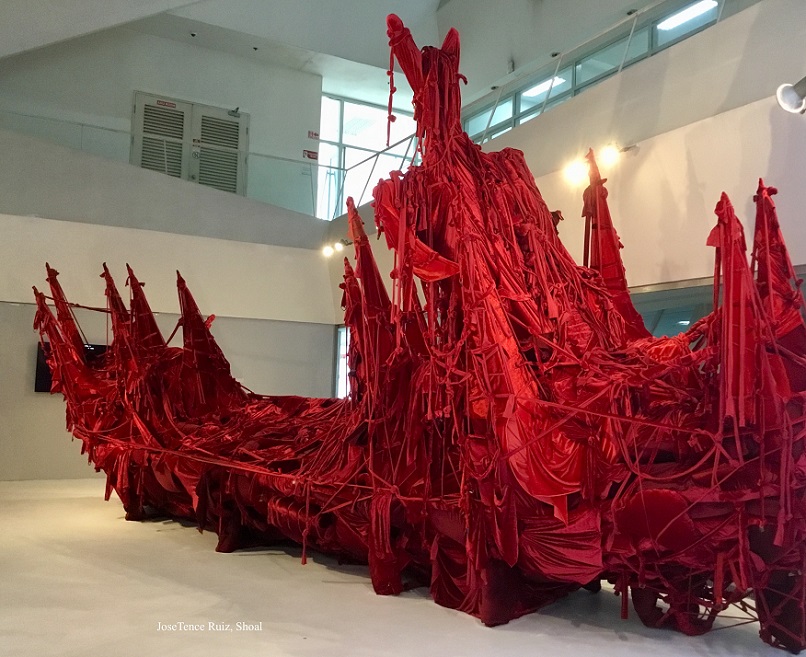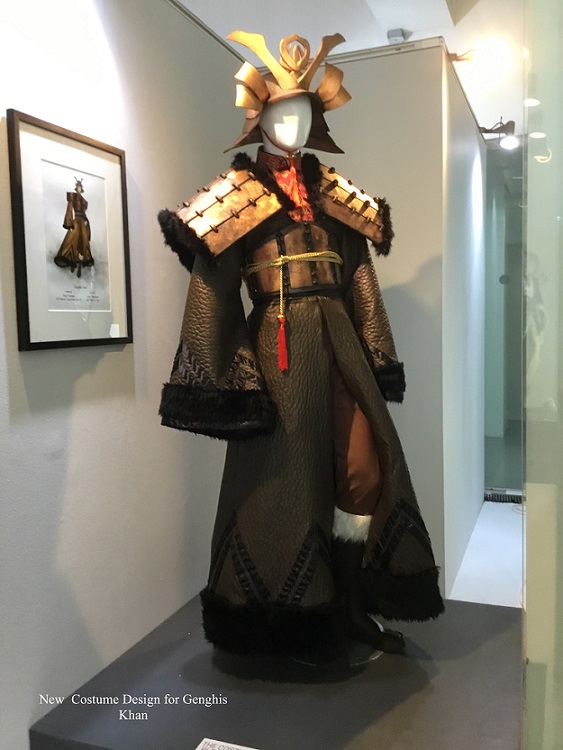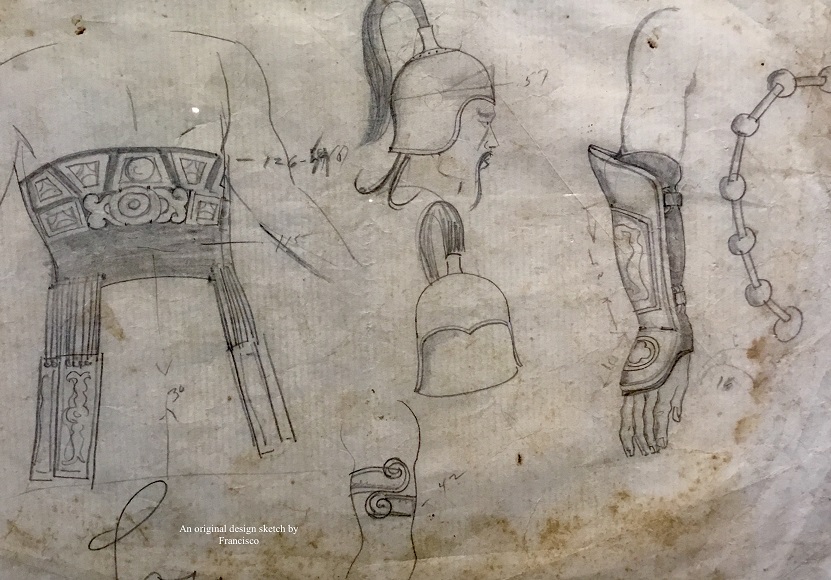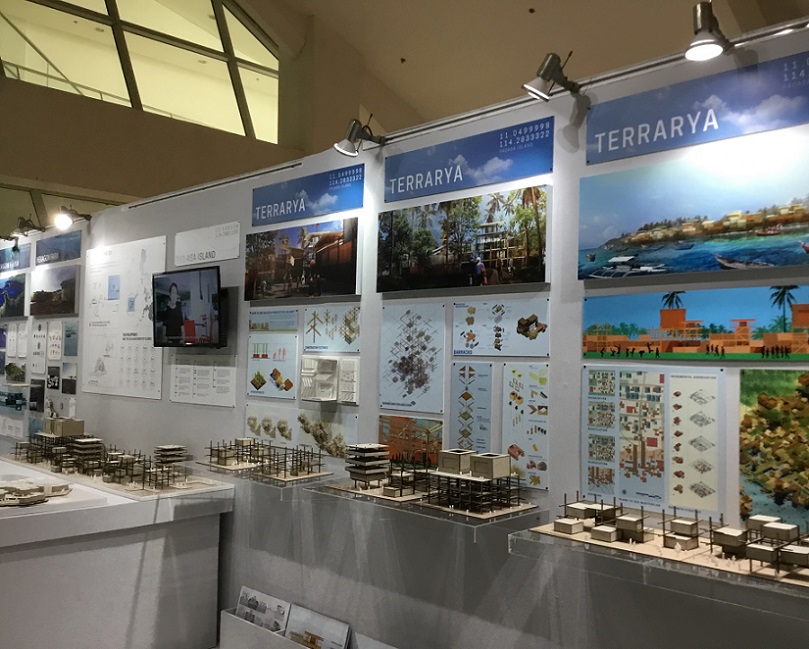
Shoal by Jose Tence Ruiz
Catch the Venice Biennale in Taft, Manila! A restaging of the 2015 Philippine Pavilion, Tie a String Around The World, is on show at the College of St Benilde, De La Salle University until August 4, 2018.
After Venice, Tie A String… went to the Vargas Museum in UP Diliman in 2016 and now, it’s Benilde’s turn.As envisioned by the curator, Patrick D. Flores, it should not be “a singular spectacle” in Venice; instead, “it should mutate…” because otherwise, “it becomes only export art that merely caters to the expectation of an international audience.”
Hello, Venice!
After a 51-year absence, the Philippine Pavilion has returned to the 56th Venice Biennale in 2015 represented by two artists: Jose Tence Ruiz (b. 1958) and Manny Montelibano (b. 1971), revolving on the central image ofGenghis Khan.They presented their own responses to the Genghis Khan film to start a discussion on the history of the sea in relation to the world today.

New costume design for Genghis Khan
Shown at the Venice Film Festival in 1952, Genghis Khan was the first film ever made on the Mongolian conqueror in 1950 by actor and director Manuel Conde (1915-1985), and Carlos Francisco (1912-1969) who co-wrote the script and designed the costumes and the set. They were declared posthumously as National Artists by the Philippine Government.
The film tells the story of a young Genghis Khan and his life as a warrior and eventually, a conqueror of vast swathes of land and people, extending from the Pacific to Europe. It ends with the Mongolian conqueror on top of a mountain surveying his empire, and promising his belovedto “tie a string around the world” and lay it on her feet.
The film returns to Venice in 2015 “to reflect on the country’s modernity and the present scheme of the world being redrawn on the surface of water,” says Flores.
It puts forward thoughts on world making, how countries and empires are built through boundaries and military control, and “the notions of nation, territory, and archipelago”— a theme that resonates with a number of Asian nations involved in maritime disputes with China.
Maritime Warriors
Two years after the Philippine won its case against China in the Permanent Court of Arbitration at the Hague, China continues its rapacious actions: large-scale land reclamations and the building of artificial islands for military purposes; the massive destruction of coral reefs and marine life; as well as the harassment of Filipino fishermen who cannot fish in their traditional fishing grounds.

An original design sketch by Carlos Francisco
Calling it a “slum fortress, Shoal is a huge fabricated metal-and-velvet installation by Jose Tence Ruiz, evoking a dilapidated and rusting Philippine Navy vessel, Sierra Madre, and also the name of the longest mountain range in the country. Its reddish tinge connotes blood, sacrifice, and fury.
In 1999, the Sierra Madre was deliberately run aground in Ayungin Shoal to mark the country’s claim to the reef in the Spratly area. A small group of Filipino soldiers are stationed on board. The Philippines regards the Ayungin Shoal as within its 200-mile exclusive economic zone; China claims virtually all of South China Sea.
Manny Montelibano offers a three-channel video, A Dashed State that focuses on the West Philippine Sea. It contrasts daily life on a tiny island in Palawan against the vastness of the ocean, taken from different shorelines in the country. Amidst waves crashing, an ancient Palawan epic is chanted, interrupted repeatedly by radio static and a clear Chinese news broadcast that dominates everything else.

Terrarya
“Speculative Structures”
Additional works made by Benilde students present a delightful interplay of art and praxis: costume designs for Genghis Khan reinterpreted by students of production design; “speculative structures” (Terrarya, Hexagon Farm, and Vivarium) by architecture majors under Architect Jim Caumeron in order to strengthen the Philippine presence in the disputed area. Terrarya for Pag-asa Island will harvest the island’s natural resources, e.g. coconuts, as well as build a hydroponics farm for a sustainable ecosystem. A Harvest Tower will collect rainwater for the farm. HexFarm, located off the coast of Kota Island, West Philippine Sea, is a modular floating farm for the production of South Sea pearls with an oyster hatchery and an algae greenhouse.
Really, they are interesting designs and models that afford us to dream and explore the realm of possibilities, but only on paper.
Laudable as speculative designs in an art exhibit, the reality sinks in: are we really that powerless in the face of China’s maritime encroachments and sheer impunity in the South China Sea?
